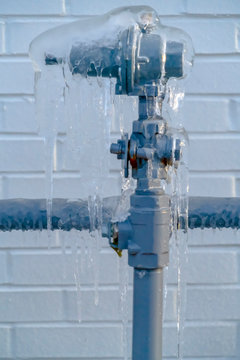Are you in search of resources about Winter Plumbing Precautions: Preventing Frozen Pipes?

Winter can ruin your pipes, particularly by freezing pipes. Below's how to prevent it from occurring and what to do if it does.
Introduction
As temperature levels decrease, the risk of frozen pipelines boosts, possibly bring about expensive fixings and water damage. Comprehending just how to avoid frozen pipes is vital for homeowners in cool environments.
Comprehending Frozen Pipelines
What causes pipes to ice up?
Pipelines freeze when revealed to temperatures listed below 32 ° F (0 ° C) for expanded durations. As water inside the pipelines ices up, it increases, taxing the pipe walls and potentially triggering them to break.
Risks and damages
Frozen pipes can result in water disruptions, residential property damage, and pricey fixings. Burst pipes can flooding homes and trigger substantial structural damages.
Signs of Frozen Pipes
Determining frozen pipelines early can stop them from bursting.
Exactly how to recognize icy pipes
Try to find lowered water flow from taps, unusual odors or noises from pipelines, and visible frost on revealed pipelines.
Avoidance Tips
Protecting prone pipes
Cover pipes in insulation sleeves or make use of warm tape to shield them from freezing temperatures. Focus on pipelines in unheated or external areas of the home.
Heating methods
Keep interior areas properly heated, particularly locations with pipes. Open cupboard doors to permit warm air to circulate around pipelines under sinks.
Shielding Exterior Plumbing
Garden hose pipes and outside taps
Separate and drain pipes yard tubes before winter season. Set up frost-proof faucets or cover outside faucets with shielded caps.
What to Do If Your Pipes Freeze
Immediate activities to take
If you presume icy pipelines, maintain faucets open to eliminate pressure as the ice thaws. Make use of a hairdryer or towels soaked in warm water to thaw pipelines slowly.
Long-Term Solutions
Architectural changes
Consider rerouting pipelines away from outside wall surfaces or unheated locations. Include added insulation to attic rooms, cellars, and crawl spaces.
Updating insulation
Buy top quality insulation for pipes, attics, and walls. Correct insulation helps maintain consistent temperature levels and minimizes the threat of frozen pipes.
Verdict
Protecting against icy pipelines needs positive actions and fast responses. By understanding the reasons, indications, and safety nets, house owners can secure their pipes throughout cold weather.
5 Ways to Prevent Frozen Pipes
Drain Outdoor Faucets and Disconnect Hoses
First, close the shut-off valve that controls the flow of water in the pipe to your outdoor faucet. Then, head outside to disconnect and drain your hose and open the outdoor faucet to allow the water to completely drain out of the line. Turn off the faucet when done. Finally, head back to the shut-off valve and drain the remaining water inside the pipe into a bucket or container. Additionally, if you have a home irrigation system, you should consider hiring an expert to clear the system of water each year.
Insulate Pipes
One of the best and most cost-effective methods for preventing frozen water pipes is to wrap your pipes with insulation. This is especially important for areas in your home that aren’t exposed to heat, such as an attic. We suggest using foam sleeves, which can typically be found at your local hardware store.
Keep Heat Running at 65
Your pipes are located inside your walls, and the temperature there is much colder than the rest of the house. To prevent your pipes from freezing, The Insurance Information Institute suggests that you keep your home heated to at least 65 degrees, even when traveling. You may want to invest in smart devices that can keep an eye on the temperature in your home while you’re away.
Leave Water Dripping
Moving water — even a small trickle — can prevent ice from forming inside your pipes. When freezing temps are imminent, start a drip of water from all faucets that serve exposed pipes. Leaving a few faucets running will also help relieve pressure inside the pipes and help prevent a rupture if the water inside freezes.
Open Cupboard Doors
Warm your kitchen and bathroom pipes by opening cupboards and vanities. You should also leave your interior doors ajar to help warm air circulate evenly throughout your home.

Hopefully you enjoyed reading our piece about Prevent Frozen Pipes . Many thanks for taking the time to read through our short article. Don't hesitate to take the opportunity to distribute this post if you liked it. We thank you for reading our article about How to prepare your home plumbing for winter weather.
Call Today